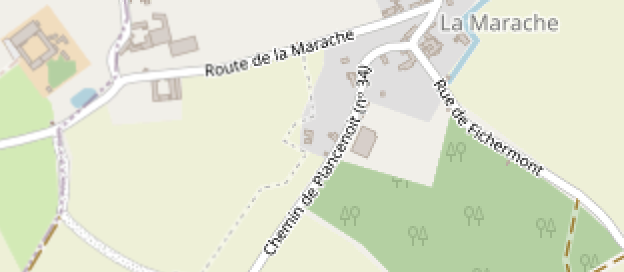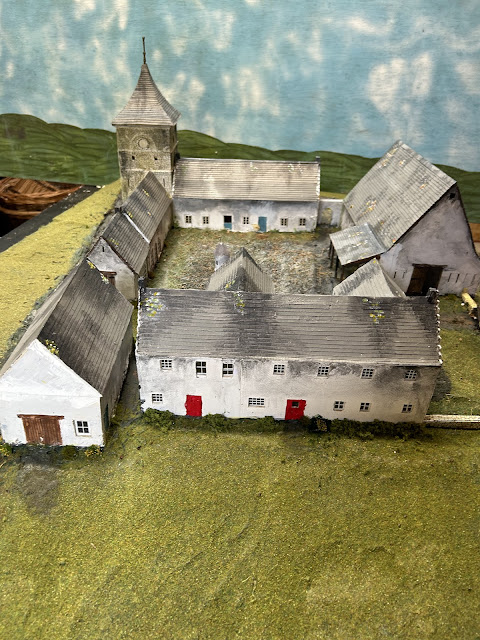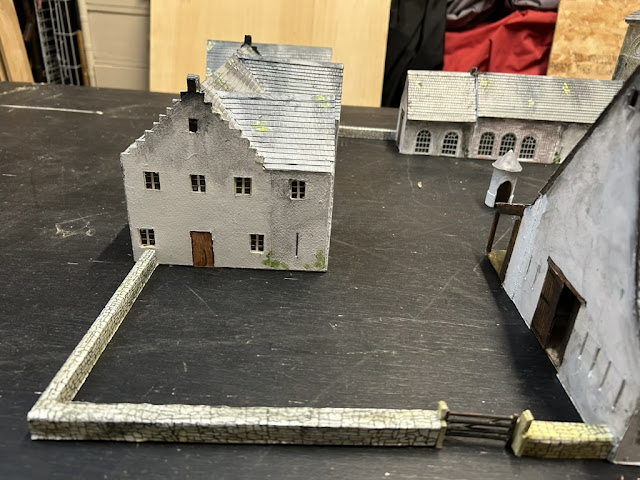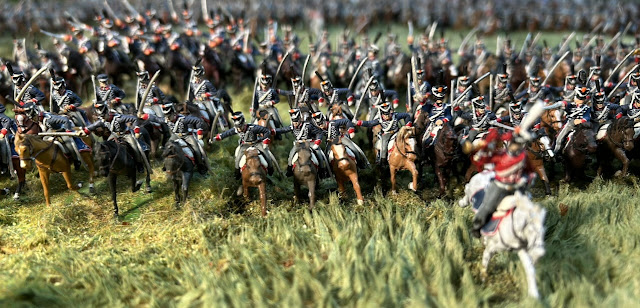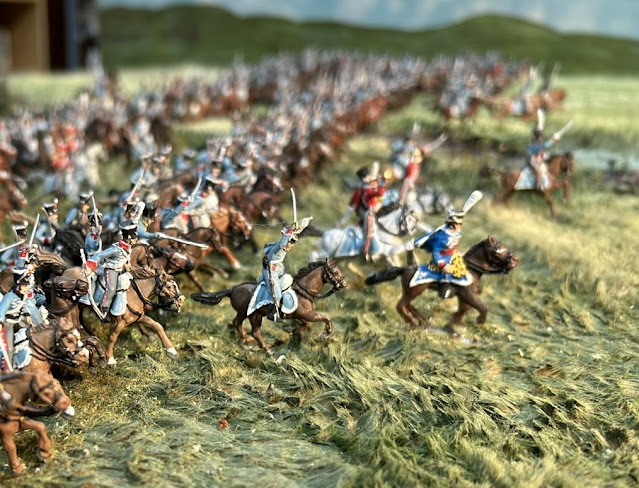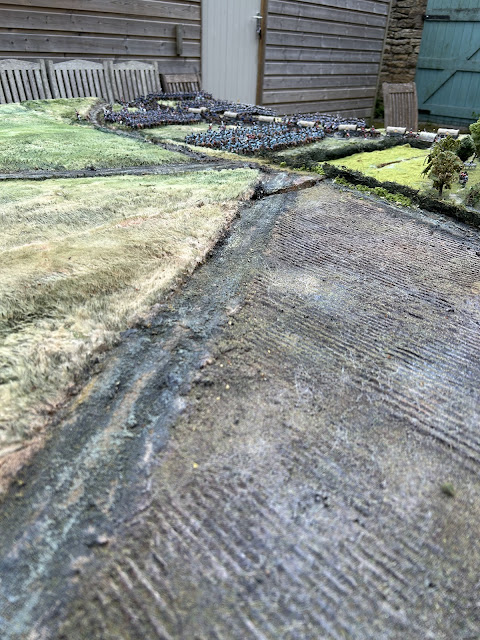
I have now completed Papelotte Farm, La Haye Farm and the chateau of Frischermont. It therefore remains to fill in the gap between these buildings.
The village of Smohain, known more often nowadays as La Marache was not modelled on the Siborne diorama. There are however several contemporary maps and we can use Google Earth to look at existing building and deduce which might have been there in 1815.

 |
| A key question is whether there was a church in Smohain. This contemporary image suggests there was. |
 |
| Again, in this image the same church can be seen. Both pictures are however painted from La Haye Sainte, and are therefore at some distance. The problem is that none of the contemporary maps show a church. |
 |
| This image is part of a broader series and clearly shows that intense fighting took place around the church. The image is wrongly entitled "Frischermont" but it is clearly the village and not the chateau. |
 |
| The nearest church is in Ohain, not Smohain and is a good match for the contemporary image. Could it be that there was a church in Smohain that was destroyed after the battle or did the contemporary artists paint the church in Ohain not Smohain? |
This image, taken from a contemporary panoramic seems to confirm it is Ohain not Smohain church:



